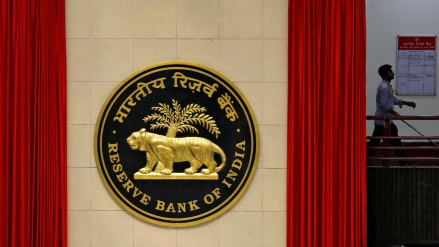– By Paritosh Kashyap
The Reserve Bank of India (RBI) is expected to hold the key policy rates in its June monetary policy review amidst volatile food inflation and a further pushback to the timing of the US Fed’s rate easing cycle.
Seen in the background of domestic and global inflationary projections, the expectations of a rate cut now moves to Q3FY25 at best.
The hawkishness in stance is expected to continue for time being as the RBI would await far more clarity from the US Federal Reserve and other central banks. US CPI print in April came in line with expectations at 3.4%, adding to relief for US FOMC. Market continues to expect a 25-50 bps rate cut from the FOMC by the end of this calendar year.
Underlying inflationary pressures remain: Domestically, the April retail inflation data at 4.83 per cent was an 11-month low aided by deflationary trends in fuel and other consumption items, yet it was above the RBI’s medium-term target of 4 per cent, limited by higher food inflation at 8.7% per cent. Vegetable prices remain the major challenge in all calculations with the fewer levers being available to control the periodic spikes in prices.
However, core inflation continues its downtrend (below 3.5%) and should provide comfort to RBI. One would continue to be watchful about geopolitical issues affecting fuel prices and impact of adverse weather conditions on food inflation.
Also, the economy continues to show robust growth as evident from the GDP growth numbers much higher than street estimates. India clocked a GDP growth rate of 8.2% for FY24 vis-à-vis 7% for FY23 & market estimate of 7.6% for FY24. RBI continued with their estimate for FY25 GDP growth rate at 7%. Combination of inflation above RBI’s target and a robust economy set the stage for RBI to continue in “wait & watch” mode.
When it rains, it should pour: With the Met Department expecting a normal monsoon, there is definitely much anticipation in the economy. The South-West Monsoon is expected to cover Kerala in May itself with the “above-average” monsoon improving the prospects of the agricultural sector besides filling up the parched water bodies across states like Karnataka and Telangana and replenishing reservoirs for power generation. An ideal spatial distribution of the Monsoon in June and July are vital to improve the yield from Kharif crops like rice and pulses – sown in this period.
RBI’s bonanza to Central Government: RBI surprised the street with the announcement of transfer of Rs 2.1 lakh crore surplus to GoI for FY24. This is expected to make it easier for the government to stick to their fiscal consolidation guidance and also a better cushion for spending without increasing the gross borrowing. Fiscal consolidation path is also a key monitorable from India’s sovereign rating perspective. We have already witnessed a change of rating outlook to “Positive” from S&P.
While the liquidity conditions have remained tight amidst low spending owing to elections, we believe there’s a comfortable cash balance with GoI (esp. post the RBI transfer). With government spending expected to revive in 2QFY25 post elections & expected FPI inflows, liquidity is expected to moderate & thus be positive in the near-term for the short end of the curve.
The timing seems right for “wait & watch” mode to continue for RBI given a declining inflation trajectory amidst buoyant GDP growth.
(Paritosh Kashyap is the President & Head-Wholesale Bank at Kotak Mahindra Bank.)
(Disclaimer: Views expressed are personal and do not reflect the official position or policy of Financial Express Online. Reproducing this content without permission is prohibited.)
